Raise your hand if you’ve ever felt awkward even saying the words “groin massage” out loud. The topic walks a funny line: on one hand, it’s a real area with important muscles prone to strain or tension, especially for athletes or folks with active lifestyles. On the other, there’s a cloud of confusion, embarrassment, and legit questions about whether it’s okay or even normal to have a massage therapist work on that area. So, can a massage therapist massage the groin area? Let’s clear things up right now: it depends, but there’s a lot more to it than just a yes or no.
Can a Massage Therapist Massage the Groin Area?: Your Comprehensive Guide
Massage therapist groin area—just saying that out loud is enough to make some people blush. Yet, understanding it is way more important than you might think, especially if you deal with muscle pain, limited mobility, or sports injuries. The groin’s a complex region, made up of adductor muscles, fascia, and lots of critical nerves and blood vessels. A massage therapist may address these if you have a valid clinical reason, with clear boundaries and, most importantly, your full consent.
People often jump to questions: Is this normal? Is it safe? What’s the process? Whether you’re curious about injury rehab, looking for deeper healing, or just want to know where the line is, you’re about to get clarity. We’ll look at the history behind this kind of bodywork, why it matters, when it’s appropriate, the benefits and potential risks, plus tips for doing it right in a professional setting—especially in wellness-focused regions like Dubai, where cultural expectations are part of the mix. Buckle up; let’s make this less awkward and a lot more useful.
Understanding the Basics of Massage Therapy for the Groin Area
Origins and History
Massage has been part of human healing traditions for centuries. From traditional Chinese medicine to ancient Greek athletics, touch therapy was used to aid recovery, prevent injury, and promote relaxation. Historically, though, intimate areas—including the groin—were rarely addressed outside specific medical contexts.
Today, with advancements in sports science, physiotherapy, and anatomy, there’s growing recognition that the groin (including the adductor, pectineus, and gracilis muscles) sometimes needs targeted work, especially for athletes, dancers, and individuals recovering from strain or surgery. That being said, in most cultures—including Dubai’s—massaging the groin area is only carried out with clear medical need, explicit consent, and within strict professional guidelines.
Core Principles or Components
Here’s the deal: legitimate therapists always prioritize boundaries, transparency, and professionalism. The key components of safe groin massage include:
- Your explicit, informed consent—nothing happens without it.
- Professional draping techniques—modesty is always preserved.
- Clinical reasoning—groin work is usually only done if there’s muscle tightness, sports injury, or therapy prescribed by a specialist.
- Clear communication—therapist checks in throughout.
- Documented therapeutic goals—never, ever for non-therapeutic or sexual reasons.
Think of it as the difference between your DIY back rub and seeing a physiotherapist—one is feel-good, the other is medical-grade support focused on your health.
How It Differs from Related Practices
The big thing setting legitimate groin-area massage apart from others is professional intent. Sports massage, myofascial release, and remedial massage touch on many muscle groups but don’t automatically include the groin. Deep tissue and general relaxation massage usually avoid sensitive areas. Only specialized training and clinical need justify approaching this region.
| Practice | Key Feature | Primary Benefit |
|---|---|---|
| Groin Area Massage | Targeted muscle therapy | Relieves tension/injury in adductors |
| Sports Massage | Whole-body focus, injury-centric | Boosts recovery, prevents injury |
| Relaxation Massage | Full body (non-intimate areas) | Reduces stress, general well-being |
| Physical Therapy | Medical rehab focus | Restores function, post-injury rehab |
Who Can Benefit from Massage Therapy for the Groin Area?
Not everyone needs groin massage. Here’s who might consider it, under medical advice:
- Athletes (especially runners, soccer players, martial artists) with groin pulls or strains
- Dancers or gymnasts recovering from overuse
- People with chronic hip pain or tight inner thigh muscles
- Post-surgical patients (with doctor sign-off) needing scar tissue or lymphedema management
Folks seeking relaxation or spa pampering shouldn’t expect therapists to work on intimate zones without clear medical purpose. A skilled therapist will explain if and why it’s helpful for your situation.
Benefits of Massage Therapy for the Groin Area
Relieves Muscle Tension and Pain
One thing’s certain: a tight groin isn’t just uncomfortable—it can ruin your run, mess up your posture, and trigger compensation issues in your hips and back. Focused massage can release deep muscle knots, ease spasms, improve range of motion, and speed up recovery from pulls or tears. General research into sports massage confirms that targeted therapy increases blood flow, aids tissue repair, and eases pain signaling, which is a big deal if you’ve ever limped off a football field with an adductor strain.
Enhances Flexibility and Function
Anybody who’s had to stretch out their inner thighs during yoga knows the value of keeping the groin area supple. Expert massage therapy here can help restore flexibility, balance muscle tone, and prevent re-injury by breaking up sticky fascia (the body’s internal ‘cling wrap’), improving joint mobility, and supporting better alignment. It’s especially valuable for athletes who rely on explosive movement—think high kicks, sprints, or quick pivots.
Supports Emotional and Mental Well-Being
Let’s be honest, muscle pain in sensitive areas can make anyone anxious. Addressing injury with professionalism and sensitivity helps the brain relax and restores confidence in movement. A thoughtful, guided session shows there’s support for every part of your body, helping you trust yourself—physically and emotionally—after pain or trauma. Self-care at this level is empowering, not embarrassing.
Practical Applications and Everyday Impact
Want to return to sports, avoid recurring injuries, or just walk without awkward twinges? Targeted massage can improve day-to-day function by resolving minor issues before they become chronic. Plus, trusted therapists teach you home stretches or strengthening moves to keep progress going between sessions.
| Benefit | Description | Impact |
|---|---|---|
| Pain Relief | Soothes tension in adductor muscles | Better comfort, less limping |
| Flexibility | Breaks up scar tissue, improves motion | Enhanced mobility |
| Faster Recovery | Boosts blood flow/repair | Quicker return to activity |
| Confidence | Demystifies injury in intimate areas | Mental ease and empowerment |
What to Expect When Engaging with Groin Area Massage
Setting or Context
The first thing you’ll notice: professional massage always takes place in a private, welcoming space. Reputable clinics or wellness centers in Dubai or worldwide emphasize comfort, safety, and confidentiality. Soft lighting, soothing music (nothing romantic), and a neatly made massage table make you feel respected rather than exposed. There’s plenty of draping—think towels or sheets—covering you at all times, with only the area being worked on accessible. If massage for the groin is on the menu, it’s almost always in a clinical context, not a spa relaxation session.
Key Processes or Steps
A typical session starts with a detailed intake: you’ll fill out a health form, discuss symptoms, and outline your comfort zones. The therapist explains why groin work is suggested and how it’ll be performed. They’ll then leave the room so you get undressed privately (to your comfort level). When the session starts, you’re always covered except for the area being treated, and therapists use gloved or bare, sanitized hands, working strictly within your agreed boundaries. Expect gentle, focused pressure rather than anything invasive—think more medical, less spa day. All movement and contact are explained—nothing happens by surprise.
Customization Options
The level of focus, pressure, and techniques are all adjusted according to your comfort, needs, and feedback. Some individuals prefer indirect approaches (like working the surrounding muscles), while others (like post-injury athletes) need more direct attention. You’re the boss here—if anything feels off, you can pause or stop the session at any time. Therapists check in regularly and may suggest stretches or self-massage routines for home maintenance.
Communication and Preparation
Before booking, ask about the clinic’s policies for sensitive or restricted areas. Arrange a pre-session chat if you need more reassurance. Good therapists are happy to explain, demonstrate draping, or answer anatomical questions—no shame, only empowerment. Bring comfortable clothing, set clear intentions, and be honest about your needs and limits. The more you communicate, the safer and more effective your experience will be.
How to Practice or Apply Therapeutic Groin Massage
Setting Up for Success
If you’re looking to make the most of your session, start with privacy. Turn your phone off, let trusted family or friends know your whereabouts, and allow at least an hour with no other commitments. Clean, well-lit spaces with fresh linens help you feel safe and cared for. Don’t eat right before your session, but hydrate and arrive clean, as therapists appreciate good hygiene.
Choosing the Right Professionals or Resources
Look for therapists with medical or sports massage certification, experience with injury support, and positive reviews for professionalism and results. In Dubai and many regions, massage therapists should be licensed and recognized by a professional body, like the American Massage Therapy Association (AMTA) or local health authorities.
Step-by-Step Guide
- Book a consultation and discuss your symptoms.
- Express your goals, concerns, and boundaries clearly.
- Let the therapist explain techniques and draping methods (ask to see the room and setup).
- Get undressed only to your comfort level.
- During the session, communicate about pressure, pain, or changes in comfort.
- Afterward, drink water and follow any homecare advice, such as gentle stretches or rest.
Tips for Beginners or Couples
Nervous about your first time? It helps to write down any questions and bring them to your consultation. You can request to have a support person nearby or present if that eases your nerves (though this must be discussed ahead due to privacy rules). For couples interested in self-care, consider taking a certified massage class to learn anatomy and safe pressure techniques for home use. Practice clear, nonjudgmental communication about comfort, and always prioritize consent before trying anything unfamiliar.

Safety and Ethical Considerations
Choosing Qualified Practitioners
Safety always comes first. Make sure your massage therapist holds a valid license, has experience with sports injuries or rehabilitation, and complies with local health and legal standards. Read online reviews or ask trusted healthcare providers for recommendations. Never feel pressured to say yes to anything—your choice, always.
Safety Practices
| Practice | Purpose | Example |
|---|---|---|
| Informed Consent | Client knows and agrees to procedure | Signed intake form, verbal agreement |
| Draping | Preserves modesty and privacy | Sheets covering non-treated areas |
| Sanitization | Prevents infection, cross-contamination | Handwashing, clean linens |
| Open Communication | Ensures ongoing safety and comfort | Therapist checks in during treatment |
Setting Boundaries
Your comfort zone matters more than anything. Even if you agreed to groin work before, you can change your mind at any point. Professional therapists not only respect your “no” but encourage you to speak up if something feels wrong. If you ever feel unsafe or uncomfortable, stop the session right away.
Contraindications or Risks
Massage of the groin area should be avoided under certain circumstances, such as:
- Active infection or skin conditions
- Recent surgery without clearance from your surgeon
- Pregnancy (unless cleared by your medical provider)
- Any personal history of trauma or discomfort with touch in the area
- Unclear or non-clinical reasons for the request
When in doubt, ask your healthcare provider for advice before scheduling any session.
Enhancing Your Experience with Therapeutic Groin Massage
Adding Complementary Practices
Massage therapy gets a boost when paired with structured stretches, yoga, gentle mobility drills, or even mindfulness exercises that help you scan and relax muscle groups. Many clients report that mindful breathing or visualization helps ease tension and makes the experience less nerve-wracking.
Collaborative or Solo Engagement
While professional massage is the gold standard, some people benefit from practicing guided self-massage (with safe, basic techniques) or learning from a trusted partner. Always use safe, light pressure and avoid deep work on areas you don’t fully understand.
Using Tools or Props
Some therapists use props such as foam rollers, soft massage balls, or low-tech medical tools to help access and release tight muscles in the inner thigh area. At home, tools like resistance bands or yoga straps enhance gentle stretching. Stay away from any equipment promising miracle cures—if it sounds sketchy, it probably is.
Regular Engagement for Benefits
Stretching and massage aren’t one-time fixes. Like brushing your teeth or doing squats, consistent practice gives the best results. Therapists often recommend a plan, like biweekly appointments plus home exercises, to maintain progress and prevent setbacks.
Finding Resources or Experts for Groin Area Massage Therapy
Researching Qualified Experts
Check that practitioners are credentialed through recognized bodies—either local authorities or international associations like the AMTA. Make sure they list therapeutic (not sensual) massage in their service menu and spotlight client safety, clear policies, and professional boundaries online.
Online Guides and Communities
For those who like to self-educate, legit sources like the National Institutes of Health (NIH) or the World Health Organization often explain therapeutic boundaries and the value of professional care. Avoid sketchy forums or anonymous hacks; communities like Reddit’s r/bodywork or licensed spa networks in Dubai offer ethical peer support and helpful tips.
Legal or Cultural Considerations
Especially in Dubai and many parts of the Middle East, therapists are legally and culturally required to avoid intimate areas unless there’s strict clinical justification, written consent, and adherence to local laws. Always research what’s permissible in your region before booking, and never feel pressured into violating your own cultural, spiritual, or personal norms.
Resources for Continued Learning
If you want to geek out more, check out books on sports medicine, official spa clinics’ blogs, or YouTube channels run by clinical massage therapists. Workshops, online courses, or private classes with physiotherapists are great for deep dives, especially if you want knowledge you can trust.
FAQ: Common Questions About Groin Area Massage Therapy
Here’s the part where I answer some of the most-search questions about the topic, serving up real talk for real people.
What to expect from a groin area massage?
You can expect a professional, clinical approach focused on relieving muscle tension, pain from injury, or restricted movement. The therapist will ask for consent, maintain privacy through draping, and regularly check in about your comfort. The session never includes sexual components and always follows strict ethics and hygiene.
What happens during groin area massage?
The therapist starts with verbal and written consent, a clear explanation of procedures, and draping. Gentle but targeted manual therapy addresses the adductors and surrounding muscles. Communication is open, and you control the depth, pressure, and can pause or end the session if needed. It’s much like specialized physio, not spa relaxation.
How does a groin massage differ from other types?
Groin massage is targeted, highly consent-focused, and only performed when clinically justified. While relaxation massage avoids sensitive zones, therapeutic groin work uses medical-grade techniques for injury rehab or chronic pain. The environment, intention, and communication reflect this difference—there’s no ambiguity.
What is the method of groin area massage?
Core approaches include manual compression, stretching, and myofascial release. Sometimes therapists use gentle pin-and-stretch, rhythmic kneading, or cross-fiber friction—all with your direct input. The technique matches the clinical reason: injury versus tightness versus post-surgery management.
Is groin massage suitable for beginners?
With a qualified, professional therapist, yes. Beginners should always start with a clear chat about needs and boundaries, confirm credentials, and never feel rushed. Start slow, share concerns, and stop at any point—there’s no pressure or judgment, only support.
Why Therapeutic Groin Massage Is Worth Exploring
A Path to Empowered Body Care
Getting honest about muscle health, even in sensitive areas, is a huge step toward lifelong well-being. Groin area massage, when done right, helps you recover from injury, reduce chronic pain, and boost confidence in your body. It’s about reclaiming movement and living fully—awkwardness and all.
Try It Mindfully
If you’re curious, approach therapeutic massage with intention and self-advocacy. Professional care, clear boundaries, and informed consent turn potentially uncomfortable topics into powerful tools for healing. When in doubt, ask questions—there’s no such thing as TMI when it comes to your health.
Share Your Journey
Ever tried clinical massage in a tricky area? Drop your story in the comments! And if you’re hungry for more body-positive, practical wellness tips, be sure to follow my blog or sign up for updates. Your questions and feedback make this community stronger.
Some links may be affiliate links, but all recommendations are based on research and quality.


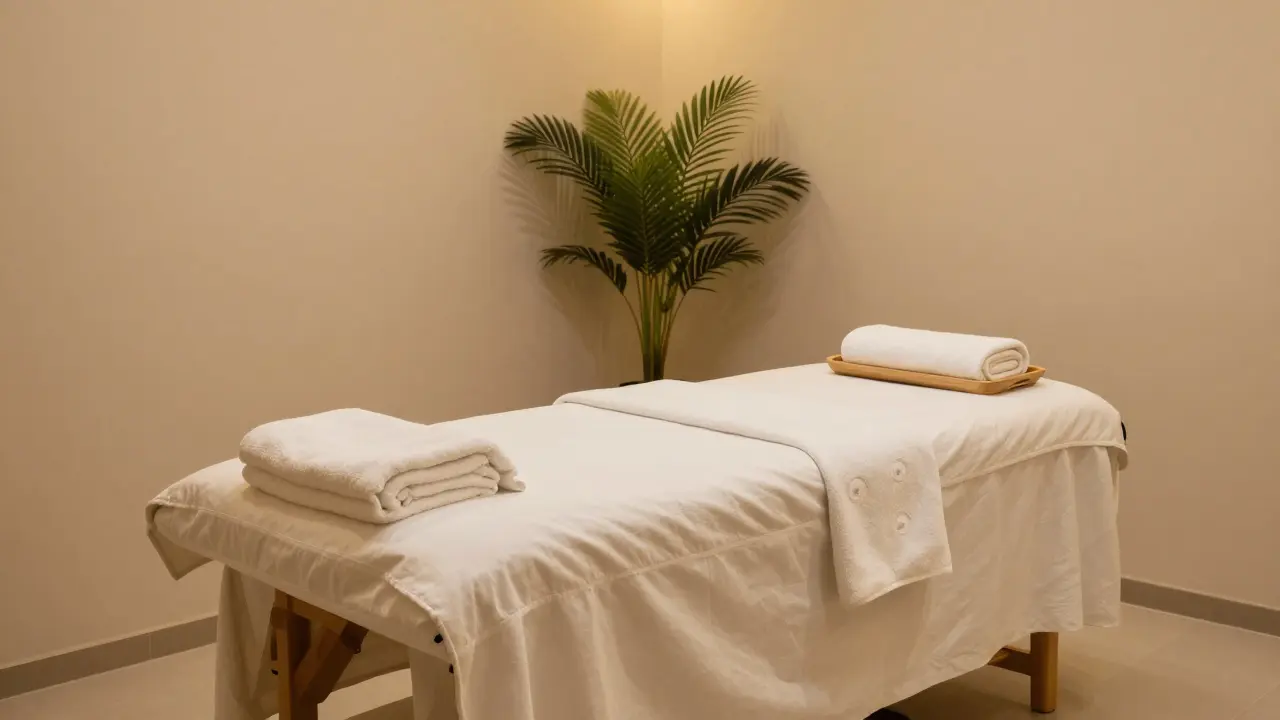
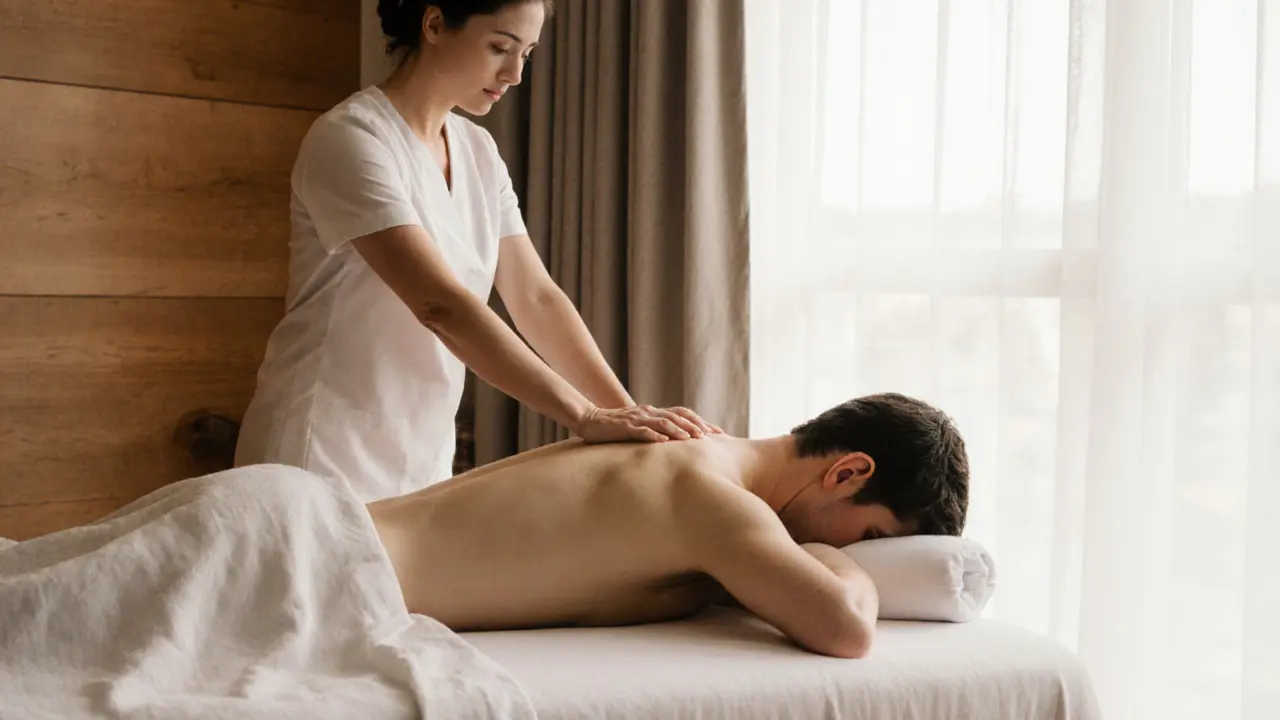
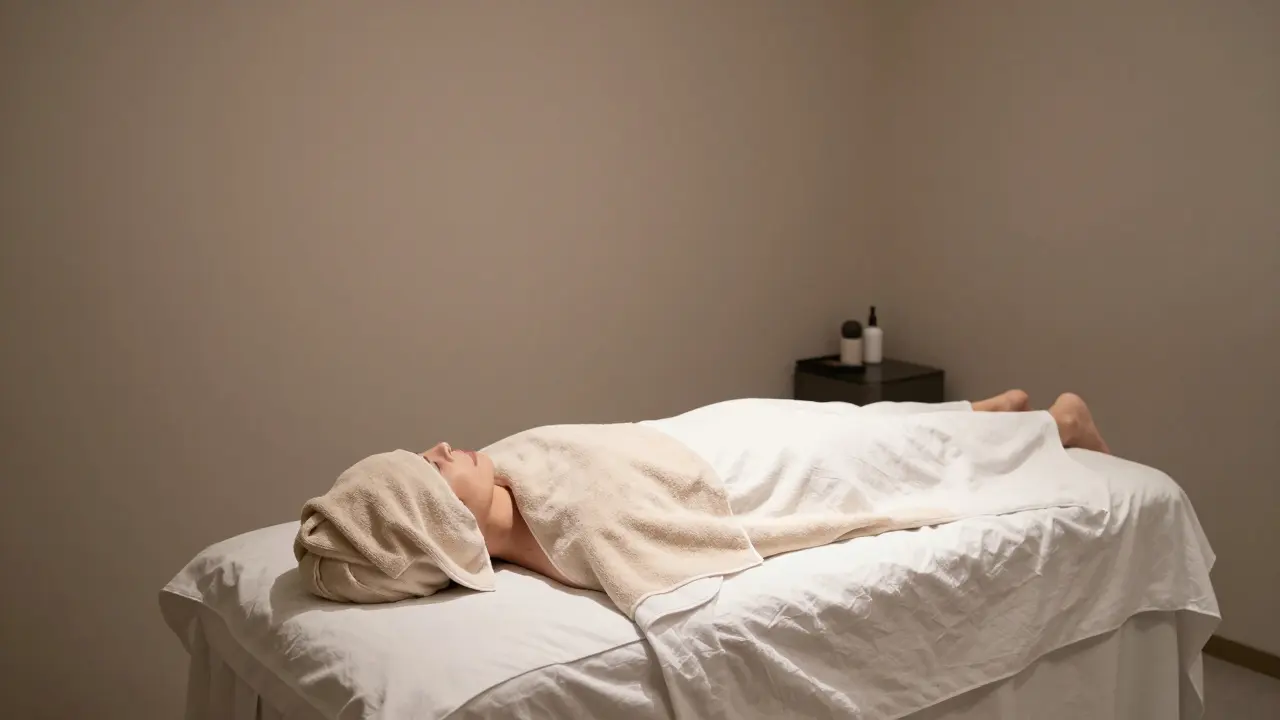
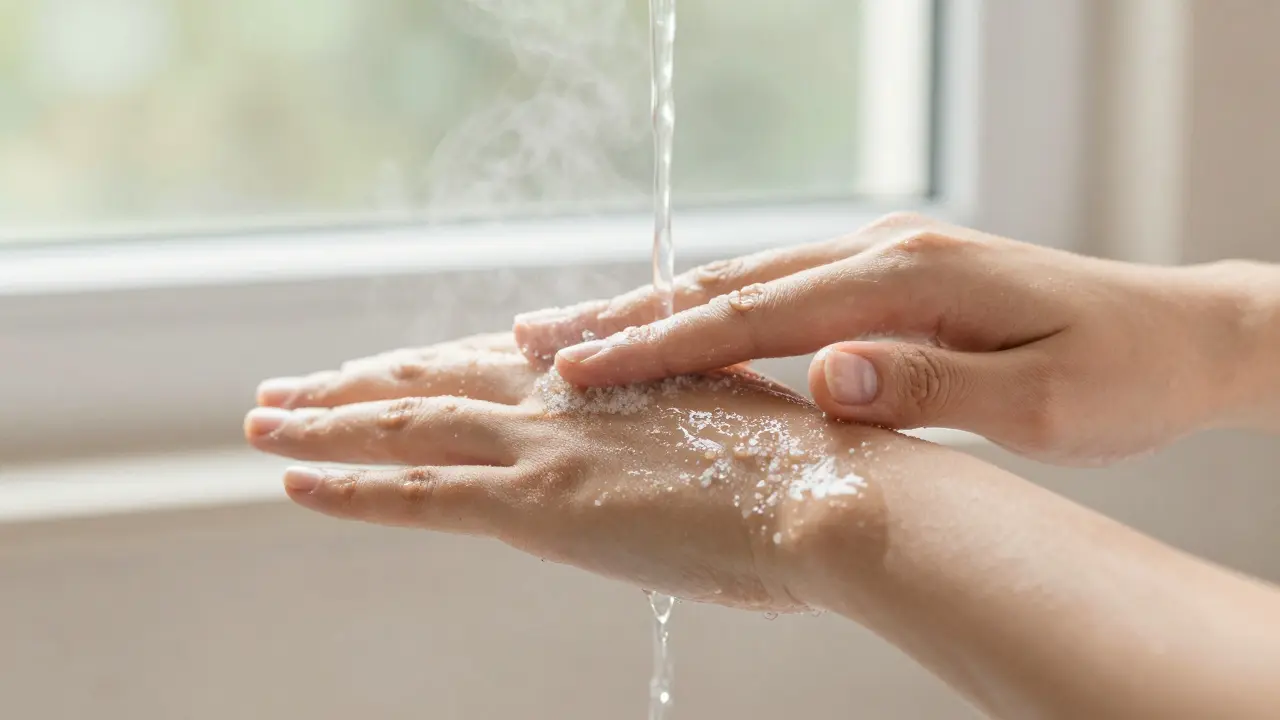
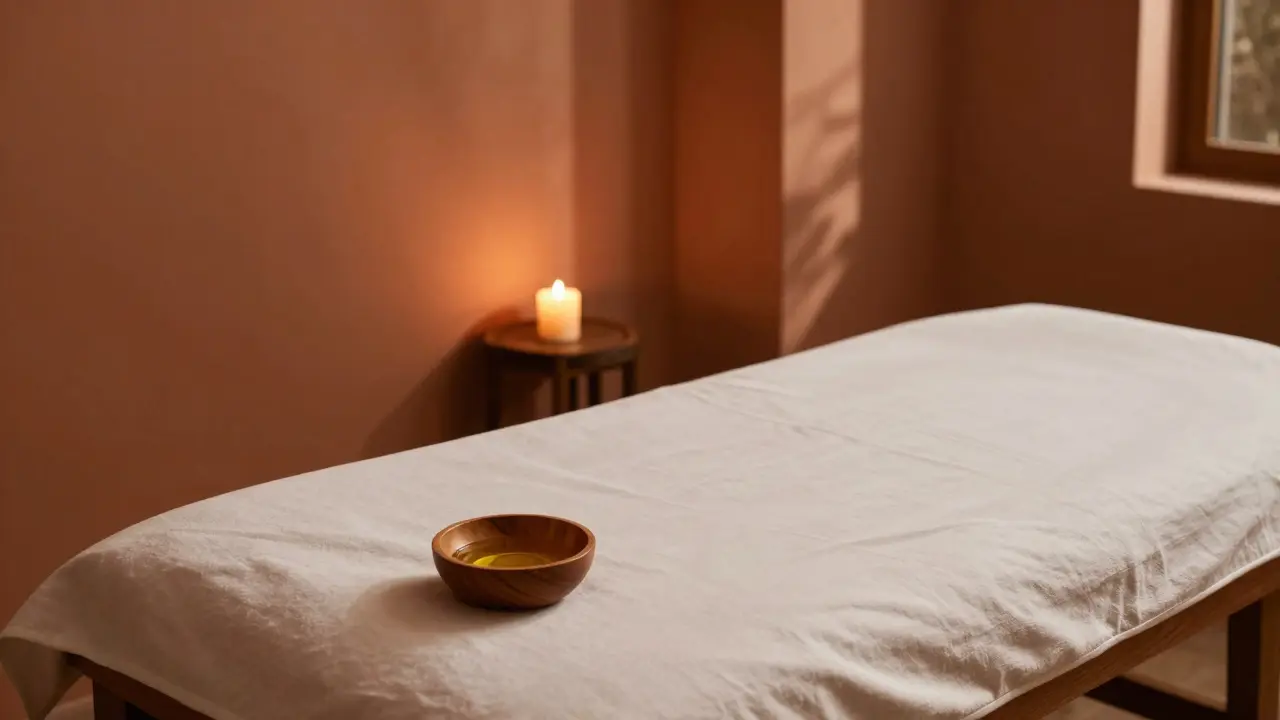
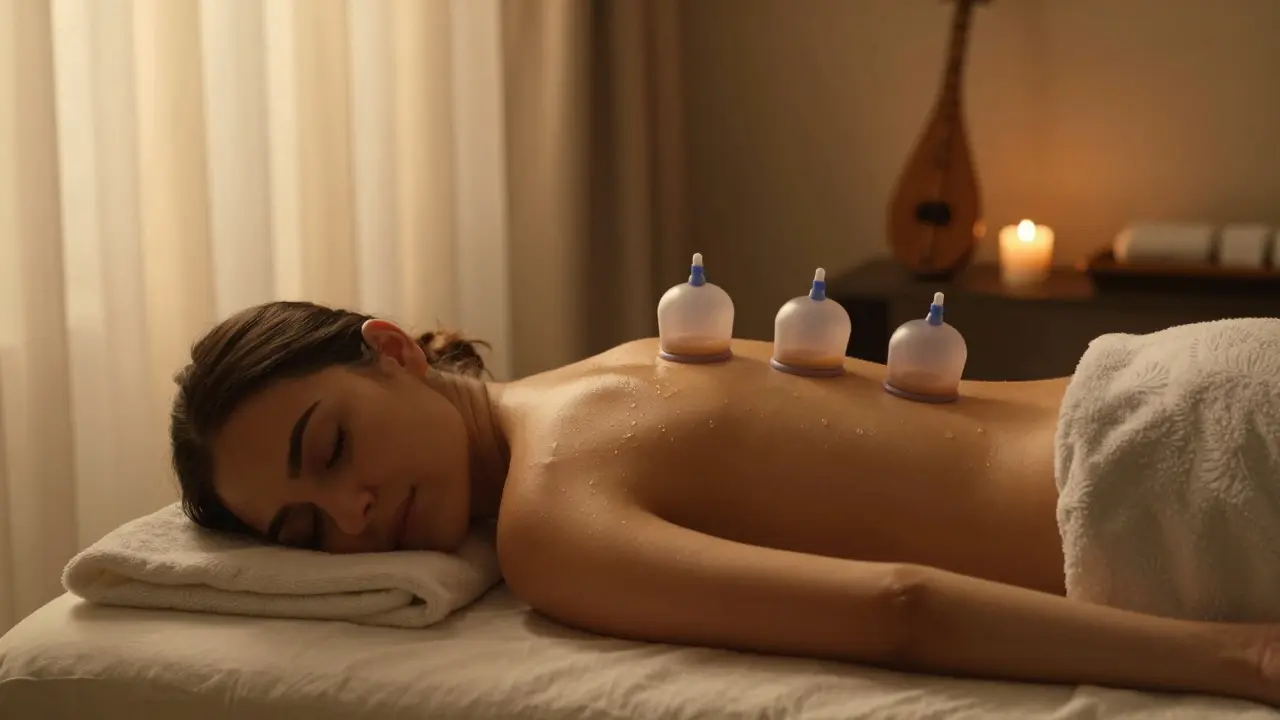
Kat Astrophic
August 8, 2025 AT 16:36It's definitely a sensitive topic, but very important to discuss with clarity. A massage therapist can work on the groin area, but only when it's part of a legitimate therapeutic need and after explicit consent has been obtained.
Therapists are trained to respect boundaries, and protocols usually require clear communication about what is and isn’t okay during a session. This area can be delicate, so safety and hygiene standards are crucial.
Also, understanding the difference between therapeutic massage and anything inappropriate is essential — ethical practice is the foundation here. This is often part of treatments addressing issues like lymphatic drainage, injury recovery, or pelvic tension.
If you’re unsure about what to expect or how a therapist approaches this, don’t hesitate to ask questions beforehand. Your comfort and trust are paramount! Transparency is key for any therapeutic interaction.
Ayush Bajpai
August 12, 2025 AT 05:20Hey folks! 😎 Just chiming in from my experience in the healthcare space: indeed, massage therapists can massage the groin area, but only under strict protocols. This usually applies for medical cases — like athletes recovering from injuries or people with lymphatic issues.
Consent is not just recommended but mandatory. Also, therapists must be well-trained and certified specifically for these techniques to avoid any harm. Safety first! 👐
Expect professionalism and clear communication during these sessions. If anything feels uncomfortable, speak up immediately. Your comfort is the top priority.
Michelle Clark
August 16, 2025 AT 16:30Omggg yeah this! When I got my sports injury rehab, they worked around my groin with really gentle pressure and it helped a lot. Just gotta make sure you’re always clear with the therapist about your limits and expectations.
And don’t be shy to ask them about their training or protocols! Most pros take this super seriously — boundaries are their top priority, not just the massage itself.
Just trust your gut, but also keep in mind that this type of massage can be a legit part of healing. I was nervous at first too but felt super safe once we talked it all out.
Sig Mund
August 19, 2025 AT 21:20Well honestly, I think we’re making too big a deal outta this. A professional massage therapist absolutely knows the boundaries and wouldn’t cross them without consent.
It’s common sense that some areas are private, and if someone agrees to that area being worked on for therapeutic reasons, then no problem!
Stop worrying about every little thing when the facts are simple: respect and consent, nothing else.
Mona De Krem
August 23, 2025 AT 14:20Eh, I dunno if I trust massage therapists these days 😒 Like, how can you really be sure what they're thinking? Sure, they say it's all about consent and boundaries, but isn’t there a risk someone might push it?
Also, why do we even need to massage such private parts? Feels sketchy to me. Is it really necessary or just a way to get touchy-feely under a legit cover?
Maybe I’m paranoid but I guess I’d only go for a groin massage if I had no other option and really trusted the person.
RANJAN JENA
August 24, 2025 AT 10:50Great discussion here, folks! Adding my two cents: in my culture and from what I’ve seen worldwide, such massages can indeed be very significant therapeutically, especially for pelvic health and recovery after injury.
The key is that the practitioner clearly explains the procedures beforehand and gets explicit consent, no rush or pressure.
Be sure the massage therapist has credentials and experience in this area, as not every therapist offers these specialized massages.
Also, some patients might prefer a same-gender therapist for such sensitive areas, which is completely reasonable. Personal comfort matters immensely.
Karan Chugh
August 31, 2025 AT 03:00Honestly, I feel like if it’s professional and properly explained, then it’s fine. But do not forget the therapist’s training! This isn’t just some random massage; it requires real knowledge of anatomy and ethics.
I always recommend people check the credentials of therapists before agreeing to any work near the groin or other sensitive areas.
No excuses for any awkwardness or crossing lines here. If you feel weird at any point, trust yourself and speak up.
Christian Gerwig
September 1, 2025 AT 09:00While I understand everyone’s points here, I’m a bit skeptical about the level of trust put in massage therapists by some. Boundaries are critical, yes, but the industry can occasionally attract sketchy characters.
Always insist on transparency regarding credentials, hygiene, and session procedures. And I’m not saying avoid these massages, just be cautious.
Stay aware, set firm limits, and be clear with yourself and your therapist.
Ryan Woods
September 3, 2025 AT 15:20Seems like a big risk to me. I mean, 'legitimate therapeutic need' is a pretty vague term. How do you know someone isn’t abusing that for personal gains?
I guess you could say ‘consent,’ but how free is that consent when you’re seated on a table, kinda vulnerable? Just feels like a grey area where boundaries are easy to cross, even unintentionally.
Personally, I’d say avoid anyone who even hints at needing to massage the groin unless you have medical supervision or a very trusted professional.
Michelle Clark
September 7, 2025 AT 16:33Replying to the concerns here: I totally get the nervousness around this topic. But please remember many therapists specialize in pelvic floor therapy or sports therapy, and their work is backed by science and clinical training!
Comfort and communication are your best safeguards. Plus, therapists often provide draping and privacy techniques to keep you feeling safe.
So, don’t let fear stop you from seeking the care you might need. Just find certified pros and talk to them openly before the session.